
What the the heck is Ayurveda is something I hear I hear my clients often ask me in a coaching session. I explain to them that Ayurveda is an ancient philosophy and approach to wellness that holds self awareness as the essence and foundation of good health.
You see, when we are healthy and balanced, we can full-fill our Dharma, our essential life purpose, allowing us to feel our best and share our gifts with the world.
You probably already know that the small choices we make everyday can dramatically affect our health overtime. Be a co-creator of the life you want!
Dinacharya is a Sanskrit term for daily rituals that when practiced regularly help support a life of optimal wellness through routine, detoxification, and nourishment. There are so many ways to synch up you own unique bio-rhythms to the cycles of nature to to maintain connection to the circadian rhythms of mama earth and the seasons (ritucharya)

A little intro to Ayurveda
How Does Ayurveda Work?
Ayurveda is based on the understanding that the body has three principle energies, or doshas, and that each individual has their own unique makeup of these three doshas called the prakriti, which is determined at birth. The prakriti determines how our bodies behave and respond to everything, from stress to emotion and even certain foods. The three doshas are each responsible for certain interactions in the body, since energy is required for our bodies to function.
The three doshas: Vata, Pitta, and Kapha
VATA
Represented by air and space, Vata controls breathing, heartbeat, and muscle and joint movement. It also controls anxiety, fear, pain, and other nervous system functions. Individuals who have Vata as their dominant dosha are known to be on the go, but can be subject to imbalance from excessive stress.
PITTA
Represented by fire and water, Pitta controls bodily functions such as metabolism and digestion, while also governing emotions like anger, hate, and jealousy. Those who have pitta as their primary dosha generally have a strong appetite and are able to digest food more easily, but can experience irritability and anger more easily than the other two doshas.
KAPHA
Kapha, like pitta, has water, but is also represented by earth as well. It is believed to control the body’s physical structure, immune system, and emotional responses such as forgiveness, calmness, love, and greed. Those who have a dominant Kapha dosha are solid and reliable, generally able to hold onto jobs and relationships long after they are “no longer nourishing or necessary.” When Kapha is in excess, however, they are subject to stubbornness and resistance to change.
Treating with Ayurveda
When any of the three doshas are out of balance, symptoms can include bloating, rashes, spots, itchy skin, sore gums, anxiety, fatigue, excessive gas, and even a bad temper. This state of imbalance is known as “Vikriti.” Sometimes the balance manages to realign itself on its own, but at other times it needs a hand. When that happens, an Ayurvedic doctor will use the symptoms to identify which dosha is out of balance, then draw upon food and drink to try and realign it by choosing those that have the opposite qualities of the symptoms that are being experienced. It’s as simple as finding peace and quiet in the middle of a stressful environment (which would be a Vata imbalance), or creating meals that are right for your unique prakriti. Essentially, the idea is that everybody’s energy is unique, but addressing the unique makeup of doshas can lead to ideal health.

Ayurvedic Food
Just like there are three principle body energies, there are also three psychic energies in Ayurveda: rajas, sattva, and tamas. These three psychic energies align with the life cycle, with rajas being associated with birth, sattva with life and maintenance, and tamas with death and destruction.
Ayurvedic cooking focuses on creating warm meals focused on sattvic foods, meaning foods and ingredients that are ripe, fresh, and natural, that also promote overall gut health. When creating Ayurvedic meals, these are the core ingredients, the ones that make the majority of the dish, and which are recommended to be consumed regularly. Ingredients like meat, eggs, and onion are classified as being rajasic food, meaning that, when eaten too frequently, they may induce overstimulation and eventual stress and anxiety.
So the question is: how do you know what foods are best for your prakriti? Dr. Chandon Prakruti, the resident Ayurvedic physician at Ananda, put together some insights on what foods are best for maintaining a balanced dosha.
Ingredients by dosha, according to Dr. Chandon Prakruti
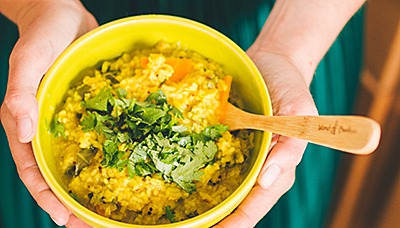
VATA
Eat more: Well-ripened fruit, cooked oatmeal, cooked rice, warm milk, cream, butter, warm soup, hot cereals, freshly baked bread, raw nuts, nut butters.
Moderate: Cranberries, pears, pomegranates, saffron, turmeric, kidney beans, black beans, red meat, wheat, barley, buckwheat, corn, dry oat, millet.
Avoid: Raw vegetables, unripe fruit, coriander seed, fenugreek, parsley, thyme, iced drinks.
PITTA
Eat more: Cold cereal, cinnamon toast, apple tea, vegetarian foods, milk, grains, and vegetables. Prioritize eating seasonally –– cold food in the summer and warm food in the winter.
Moderate: Red meat, coffee, butter, and added fat.
Avoid: Pickles, sour cream, cheese, alcoholic and fermented foods, egg yolks, nuts, hot spices, honey, hot drinks.
KAPHA
Eat more: Romaine lettuce, endive, tonic water, cumin, fenugreek, sesame seed, turmeric. Prioritize lightly cooked food, raw fruits and vegetables. Spicy foods in the winter. Dry cooking methods such as baking, broiling, grilling, and sautéing are preferable.
Moderate: Ghee, butter and oils.
Avoid: Sugar, fats, dairy, chilled food and drinks.
How to incorporate Ayurvedic practices into your daily life
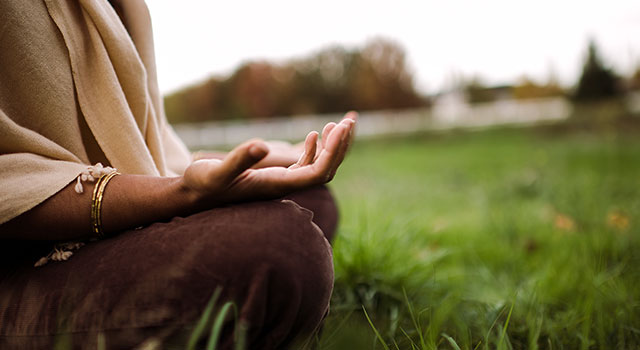
While you can definitely start cooking with some of the recommended ingredients for your dosha, a proper part of Ayurveda is a dinacharya, or “daily routine,” which is the order of practices that are done daily in order to achieve ideal wellbeing. These are determined based on the individual and their unique prakriti, so they are not all necessarily the same, but almost all of them include yoga or exercise, cleansing, and waking up on the earlier side. Here are some parts of other dinacharyas that you can use to create your own, or just incorporate into your daily routine:
Try waking up earlier
A proper Ayurvedic practice would involve waking up with the sun, as a dinacharya involves fulfilling exercises that take more time than just grabbing a yogurt and running out the door, but we understand that this goal may be a little hard to do immediately. Try going to bed earlier and waking up earlier to slowly transition over to this, to give yourself enough time to complete the dinacharya.
Try tongue scraping
Tongue scrapers have become popular recently, but they are actually an ayurvedic practice! You can purchase a proper tongue scraper online (we love this one from Jasmine Hemsley), and once you have one, gently scrape the tongue from back near the uvula towards the tip, for about 7-14 strokes.
This works to help digestion and remove bacteria. In Ayurvedic medicine, it’s believed that leftover toxins could still reside on the tongue from the day before, so scraping the tongue in the morning allows for a clean, toxin-free beginning.
Regular (seasonal!) breakfast
After you’ve completed your dinacharya, eat a light breakfast in the hot months, or a more substantial one in the winter.
One of my favorite practice of dinacharya is the practice of self -massage, rubbing warm oil all over my body – called Abhyanga. It’s a wonderfully grounding practice that helps you have more love and compassion for yourself and bring on-line your inner healer. Grab My How-To Abhyanga Guide Here
Find out your Dosha
A wonderful resources to learn more about Ayurveda and one of my favorite websites to pick up ayurveda products is Banyan Botanicals
Click here to take the Ayurveda quiz
And check out some of my favorite Ayurveda products here





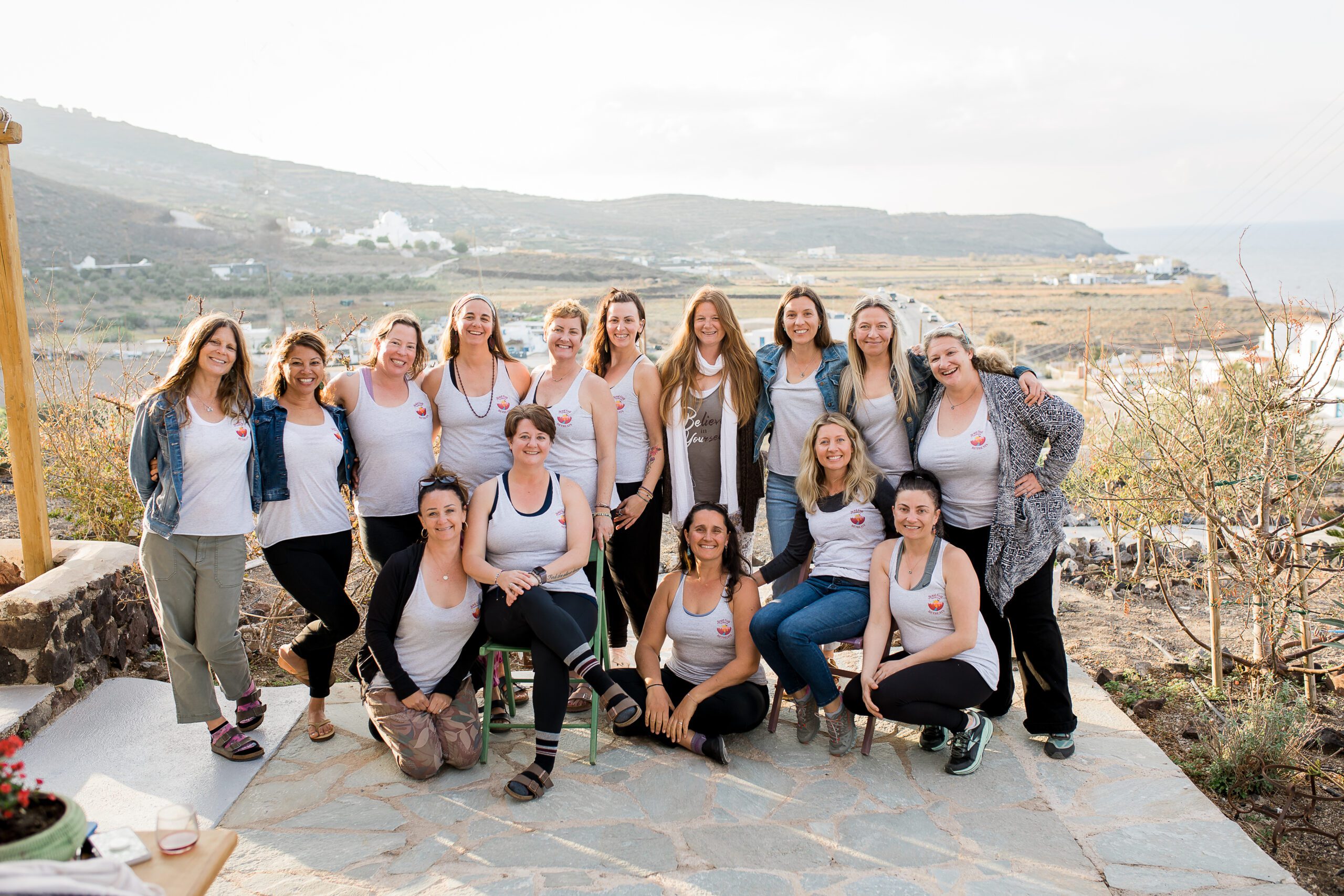
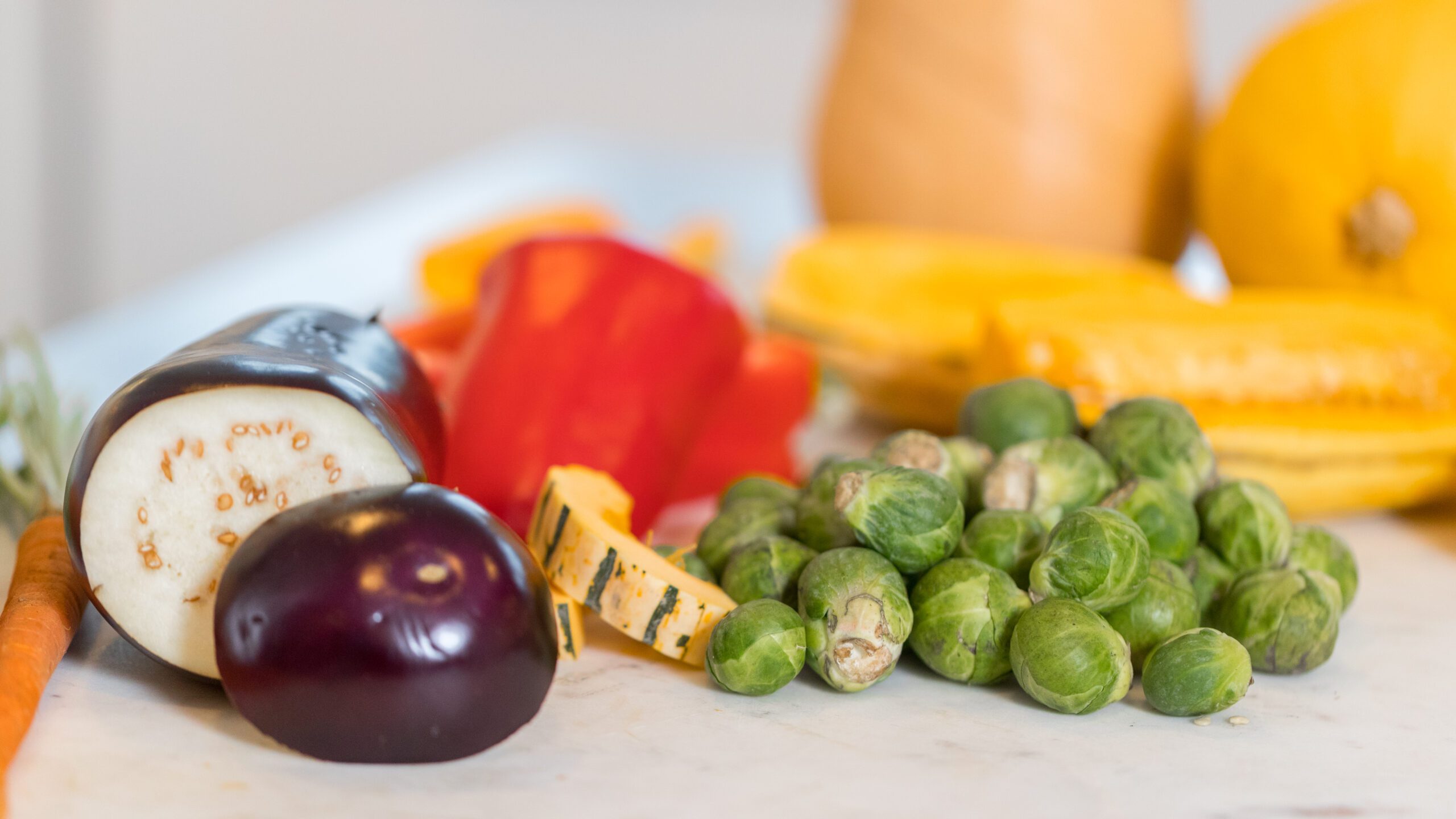

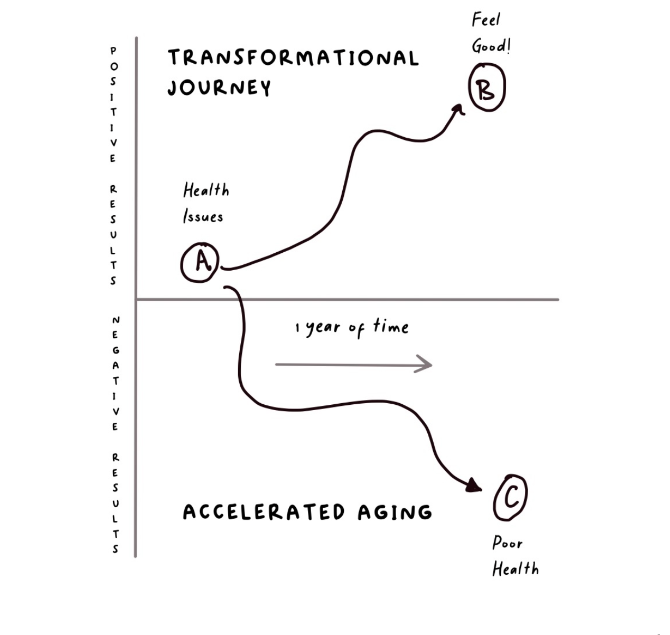
+ show Comments
- Hide Comments
add a comment